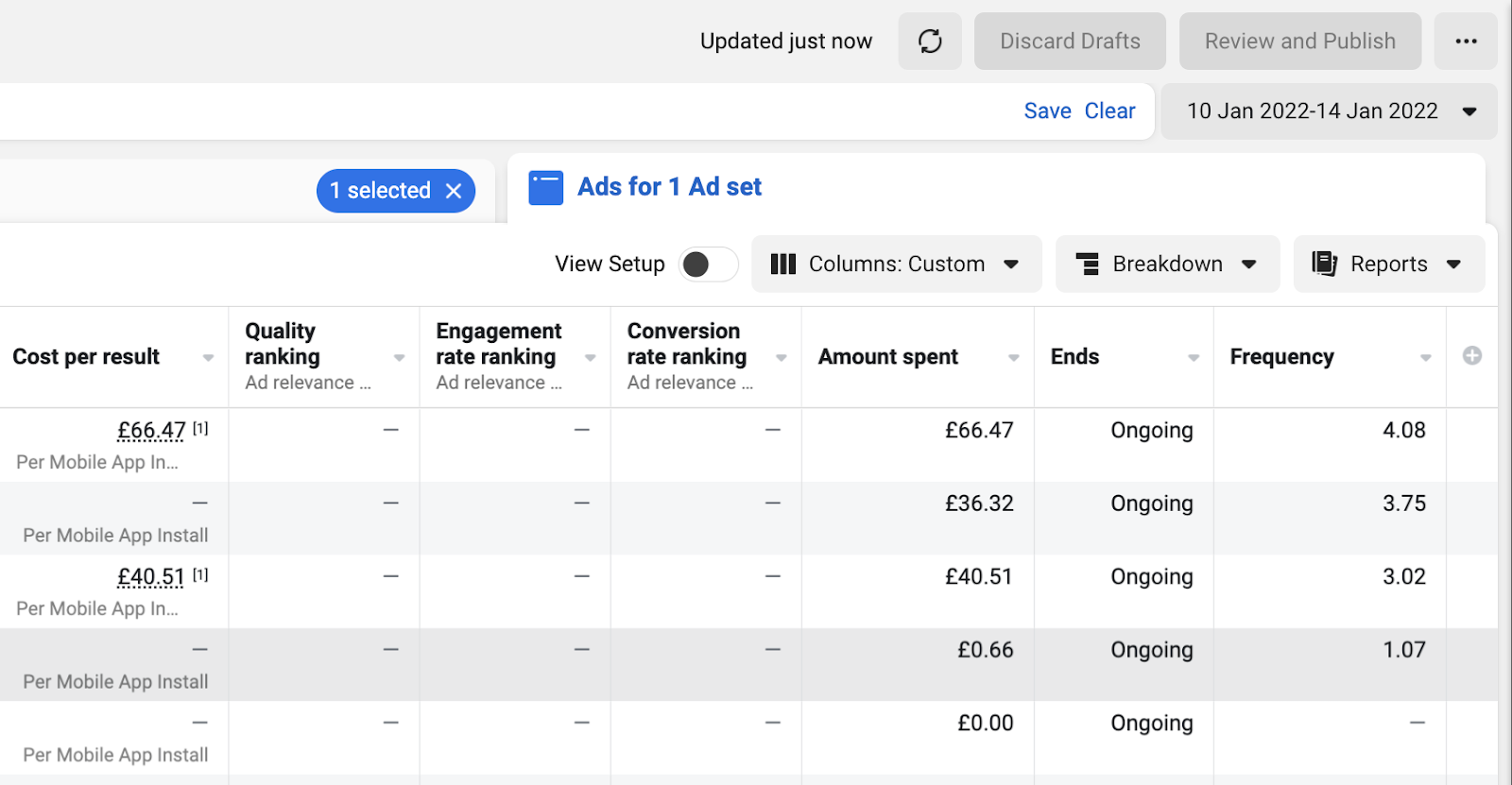In the last few years, one of the most significant challenges we’ve faced as digital marketers is creative fatigue. As users’ attention spans continue to shorten following the uptake of platforms like TikTok and YouTube Shorts, demand has only increased to create exciting and unique creative at scale to capture audiences’ attention. I’ve personally seen campaigns crash as a result of what we in the industry call ‘creative fatigue’. In today’s video we’ll be breaking down what this is and how to spot it (and make sure you keep watching to the end as I’ll be showing you one unbelievably simple trick to combat this).
What is creative fatigue?
So, what exactly is creative fatigue? In paid social advertising, this is what occurs when our audience has been shown a particular creative too many times to the point where they begin to stop engaging with it. I’m sure we’ve all seen an ad on Facebook, Instagram or even YouTube recently that we’ve seen so many times it almost becomes annoying! There might have even been times when you’ve been tempted to turn off the TV after seeing the same ad for what feels like a hundred times in the same evening. This is what we mean by creative fatigue and it’s essential for us to avoid this in order to keep our campaigns in good health.
When it comes to Facebook Ads, attention spans are even shorter than on a channel like TV so it’s important to continually refresh our creative to keep our audience engaged and open to conversion.
How can we spot creative that’s fatigued?
Now we’ve put ourselves in the shoes of our audience and realised how much creative fatigue can damage the performance of our campaigns, how do we actually spot it? After all, it’s difficult for us to know exactly when our users are getting sick of seeing a particular creative.
Luckily, the Facebook Ads platform gives us access to a number of metrics that indicate if our campaigns may be experiencing creative fatigue which I’ll break down now.
The first, and perhaps most telling metric for us to look at is Frequency. Frequency is the number of times that, on average, a user has seen an ad in your selected timeframe. For example, in this case we can see that my highest spending creative within this campaign in January was shown an average of 4.48 times. I wouldn’t consider this a particularly high frequency and with users only being shown a particular ad once a week, it’s unlikely that the creative is experiencing creative fatigue.
However, in this example we can see that the highest spending creative had a frequency of 4.08 in just 4 days between January 10th and 14th. This means that on average, the users in this audience saw this creative over once per day. At this point, it’s very possible that creative fatigue has begun to set in and users may be less likely to engage with our ads.
However, beyond frequency, there’s one more metric for us to consider and say for sure whether creative has fatigued. Quite simply, that’s whatever the KPI of your campaign is! Let’s say you’re an e-commerce business trying to improve the Cost Per Purchase of your campaigns. If you’ve seen that this has increased at a similar rate to frequency, there’s a good chance that creative fatigue is the cause of the lower performance. At this point, we can conclude that it’s time to swap out or refresh our creative in order to get our Cost Per Purchase back on track.
Part 3: How to keep a fresh supply of creative
So, how exactly can we keep up with how rapidly creative can become fatigued on the platform? It can be a daunting task getting creatives produced at such a high pace. For my campaigns, as a rule of thumb, I aim to refresh underperforming creatives between every one to two weeks. However, this is easier than it may sound and there are some tricks we can use to make creative feel fresh with minimal input.
Before designing new creatives for a campaign, it’s important to take a minute to look in your account to see exactly which creatives perform best with your audience (meaning they have a strong CTR and performance metrics achieve your targets). Do you find that videos perform better than images? Does having the product within the creative lead to a stronger CTR? Or maybe using benefit-led messaging within the copy leads to a better conversion rate? Take some time to really familiarise yourself with the recipe for a top performing ad with your audience.
Once you’ve established this, my suggestion would be to create at least 5 templates that feature these that can be easily updated. These could be project files for both static images and videos. Try and include as many elements in these as possible that can be easily swapped out. For example, you could keep all other elements the same within an image but swap out a stock photo that takes up a large part of the real estate. Or perhaps keep the image the same but update the copy to another attention-grabbing headline. Having these templates ready to update at a moment’s notice will be a valuable addition to your creative toolbox.
Hopefully you’ve now got an understanding of what creative fatigue is, how to spot it and how to combat it as efficiently as possible.


